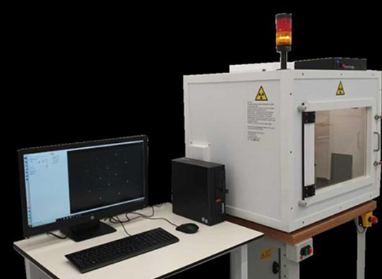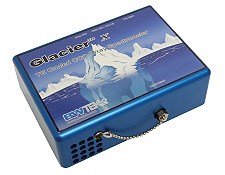基于<111>,<100>和<110>取向GaAs的IMPATT二极管:探索毫米...-2
The appropriate restrictions in (1) have been imposed via the time varying boundary conditions at the depletion layer edges. The boundary conditions for the time varying electric field at the depletion layer edges (i.e., at x = 0 and x = W) are given by
ξ(x = 0, t) = ξ(x = W, t) = 0.
(7)
Similarly the boundary conditions for time varying normalized current density (P(x, t) = (J p(x, t) − J n(x, t))/J t(t)) at the depletion layer edges (i.e., at x = 0 and x = W) are given by
P(x=0,t)=⌊(2Jp(x=0,t)Jt(t))−1⌋,P(x=W,t)=[1−(2Jn(x=W,t)Jt(t))].
(8)
Time varying diode voltage (V t(t)) and time varying avalanche zone voltage drop (V a(t)) at any instant tcan be obtained from the numerical integration of the field profile over the depletion layer and avalanche layer widths, respectively. Thus
Vt(t)=∫x=0x=Wξ(x,t)dx, Va(t)=∫x=xA1x=xA2ξ(x,t)dx.
(9)
DC values of the peak electric field (ξ P), breakdown voltage (V B), and avalanche zone voltage (V A) drop can be evaluated by taking the time averages of time varying peak electric field (ξ p(t)), diode voltage (Vt(t)), and avalanche zone voltage (V a(t)) over a complete time period of steady-state oscillation (T = 1/f; where f is the fundamental frequency of steady-state oscillation). Thus the DC values of the peak electric field (ξ P), breakdown voltage (V B), and avalanche zone voltage (V A) are given by
ξP=1T∫0Tξp(t)dt, VB=1T∫0TVt(t)dt,VA=1T∫0TVa(t)dt.
(10)
In the present L-S model, the nonsinusoidal voltage excitation (NSVE) method is adopted. A nonsinusoidal voltage (V RF(t)) of following form,
vrf(t)=VB∑np=1(mx)psin(pωt),
(11)
is assumed to be applied across the IMPATT device through a coupling capacitor (C) as shown in Figure 3. The fundamental frequency and number of harmonics of v rf(t) are f = ω/2π and (n − 1), respectively. The corresponding current response (J t(t) = J 0 + j t(t); where j t(t) is the time varying current response of the device due to applied time varying voltage r rf(t) across it) of the device (which is biased with the DC current I 0 = J 0 × A j) is obtained from the L-S simulation. The voltage modulation factor (m x) is the measure of the amount of RF voltage swing over the DC breakdown voltage (V B) of the device. Thus the fundamental component of RF voltage may be written as v rf1(t) = m x V Bsin(ωt). The sufficient accuracy in the L-S simulation results can be achieved if the numbers of space and time stapes are taken within the range of 500–600 and 100–150, respectively.
Voltage driven IMPATT diode oscillator and associated circuit.
Initially the L-S simulation is repeated for consecutive cycles to verify the stability of oscillation. After reaching steady-state, the time varying terminal current and voltage waveforms during a complete cycle of steady-state oscillation are Fourier transformed to obtain the frequency domain descriptions of those. Then the terminal current is divided by the terminal voltage (both are in frequency domain) to obtain the L-S admittance of the device (Y D(f)) as a function of frequency. The L-S admittance of the device is resolved into real and imaginary parts to obtain the L-S negative conductance (G(f)) and corresponding susceptance (B(f)) as functions of frequency (since Y D(f) = (G(f) + jB(f))A j; where A j is the effective junction area of the device considering circular cross-sectional area of the device, that is, A j = π(D j/2)2). Optimum frequency (f p) of the device may be obtained by finding out the frequency corresponding to the peak magnitude of negative conductance (|G p|) of the device. The L-S impedance of the device for any frequency f may be calculated from
ZD(f)=1YD(f)=1⌊(G(f)+jB(f))Aj⌋=ZR(f)+jZX(f).
(12)
The L-S negative resistance (Z R(f)) and corresponding reactance (Z X(f)) of the device for any frequency fmay be calculated from
ZR(f)=G(f)⌊(G(f)2+B(f)2)Aj⌋,ZX(f)=−B(f)⌊(G(f)2+B(f)2)Aj⌋.
(13)






















